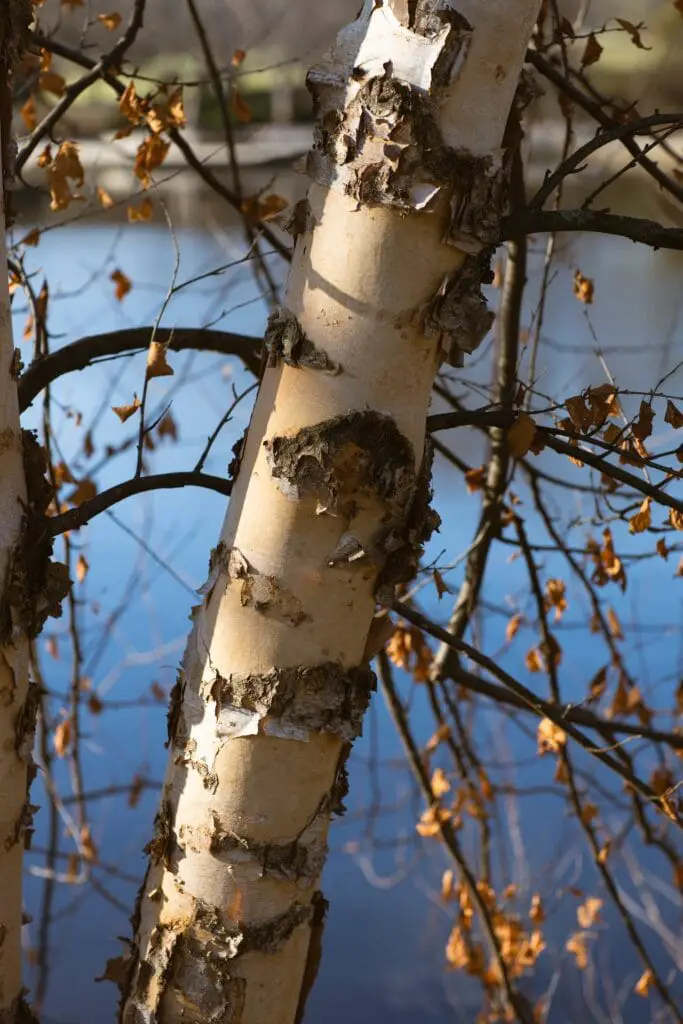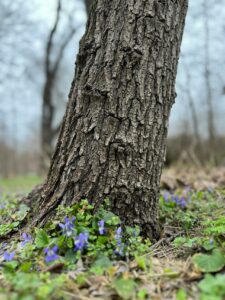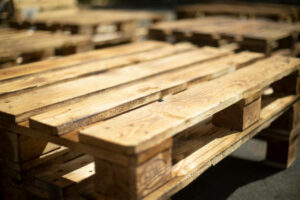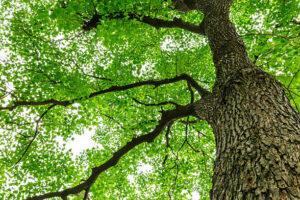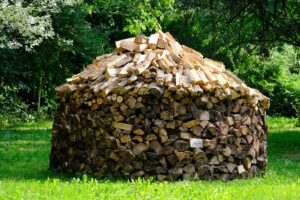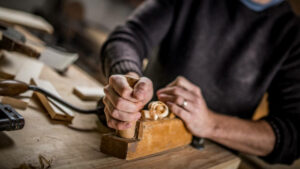If you’re new to wood carving, look for soft, forgiving wood types such as Basswood or clear white pine. This type of wood holds detail well and doesn’t splinter or break easily. Authentic Zebrawood (Microberlinia brazzavillensis) is a dramatic dark stripy wood from Central and West Africa. It is durable and can be polished to a high sheen. Here are some of the world’s most beautiful woods.
Ebony
Ebony is a rare wood that is very hard and durable. It is used for various purposes, including making musical instruments and furniture. It is also used for fancy goods such as carvings, marquetry, and inlay work. It is used in many musical instruments, such as the violin family, ukuleles, and pianos. It is often used as fingerboards, bridge blanks, peg heads, and key covers. It can also be found in woodwinds, such as flutes and recorders. It is commonly used in other applications such as cabinetry, turnings, and accessory items such as drawer handles, knife handles, and brush backs.
The ebony tree is a small, deciduous tree that typically grows at low elevations. It prefers a solitary existence rather than growing in thick stands of wood species of trees and is usually found in rocky, poor soil. The ebony trees do not grow very fast but can take up to 200 years to mature. It is harvested from the heartwood of the tree, which is jet-black and dense. The sapwood and early growth is a light brown or tan color.
It is very important to find a reputable supplier when purchasing ebony. Look for an FSC or PEFC certificate. These certificates ensure that the forests are managed in a way that is environmentally, socially, and economically responsible.
Purple Heart
Purple Heart is a rare, exotic wood with stunning color and unique properties that make it a favorite of builders and artists. It’s one of the most durable and tough woods available, able to resist moisture and insects. It also has natural oils that protect the wood and help it retain its color over time.
The purple hue of Purple Heart is due to the presence of natural pigments. These pigments are triggered by exposure to air and sunlight, so projects made from this wood should be kept indoors or covered when possible to preserve their vibrant color.
Despite its beauty, purple heart is difficult to work with for DIY homeowners. It is a dense and strong wood, making it challenging to cut with traditional hand tools. It can also be prone to tear-outs and heat up during cutting, which releases a sticky, gummy resin that can clog tools. Regular cleaning of tools is a must for working with this dense and durable wood.
Although it doesn’t appear on the endangered species list, the peltogyne tree grows in endangered rainforests, and its harvest contributes to deforestation, disrupts the lives of indigenous peoples, and feeds international crime rings. Plus, it must travel a long distance to reach consumers in the United States, so its carbon footprint is much higher than domestic options like cedar. Luckily, there are eco-friendly alternatives to Purple Heart that have the same durability and appearance as this exotic wood.
Birch
Birchwood is a beautiful and durable hardwood. It is very light in color, and it has an interesting grain pattern. It is also very dimensionally stable, which makes it an excellent choice for furniture making. Birchwood also has a subtle luminosity, which gives it an elegant appearance. It also has great acoustic and tonal qualities, making it ideal for instruments.
Birches are considered “pioneer species” because they tend to colonize open areas where forest fires or abandoned farmland have opened the ground. In the wild, birches are often seen growing in clumps along rivers and streams. They are a popular shade tree in the United States, and several different varieties can be found.
The most common birch in North America is the silver birch (Betula pendula). It can reach heights of 40 meters, and its bark is thin and papery. It has dark horizontal slits called lenticels, which act as pores that allow gases to pass from the inner bark to the outside air. The slender branches grow from a short, round trunk.
Other birches are the yellow birch (Betula allegarta), the European white birch (Betula glabra), and the water birch (Betula utilis). Water birch occurs in mountainous areas in western North America, and its bark is black or reddish-brown, unlike the slender leaves of other birches. The leaves and bark of exotic wood species of the water birch are used for medicinal purposes in the United States. The medicine is used for infections of the kidneys, bladder, ureters, and urethra, and it is sometimes used to increase urine flow in people with diabetes.
Pear
Known for its crisp and aromatic flavor, there are thousands of different varieties of pear. The eight most common commercially available pear types include Bartlett, Bosc, Comice, Conference, Anjou, Seckel, and Forelle. Bartlett pears are the quintessential pear, with thin yellow or green skin and buttery, crunchy, sweet flesh. Bosc pears are golden-brown with russeting, and they are more firm than other pears when ripe. Conference pears are large and can be used to make canned fruit. Anjou pears have green or yellow skin, and they have a creamy and sweet flavor. Forelles are small and have a distinctive look, with their yellowish-green freckled skin and red lenticels.
Unlike some other woods, pears are very dense, and their grain patterns can be extremely intricate and attractive. They can also be quite heavy, making them great for carving and sculpting. Like other fruit trees, they are best planted in a climate that is neither too hot nor cold, and they require a moderate amount of water.
While many varieties of pears can be found in your local grocery store, gourmet shop, or farmers market, some can be difficult to find. For the more ambitious, you can try growing them yourself by visiting your local garden nursery or a specialty tree farm. They grow well in North America and Europe, but they will need to be planted in a region that isn’t too dry or too wet.
Oak
Oak is a common and versatile wood that works well for both flooring and furniture, cabinets, furniture, and exterior construction. It is resistant to rot, insects, and moisture and looks great with a natural finish or even a clear coating of wood lacquer. Oaks are very dense and heavy, making them a popular choice for woodworking.
Oaks can take on a variety of colors and grains depending on the species. For example, red and white oak are two of the most commonly used types of timber species of oak trees in the United States. Their color can vary from a pale yellow to golden brown, and their grain pattern can be straight or wavy.
Another popular type of oak is the American elm (Ulmus americana), which has an even lighter color and more pronounced grain pattern. It is often found in traditional, craftsman, and mission styles of furniture. The American elm is also known as “shaker” oak because it was a favorite of furniture designers like Gustav Stickley and Frank Lloyd Wright.
For those who want the look of ebony wood but not its price, there is Katalox, which is an exotic wood from Central and South America. Its color blends of deep purples and dark browns make it a beautiful and unique wood that is perfect for woodworking.
Basswood
Basswood, which is also known as linden or lime wood, is a soft and lightweight tropical hardwood. Its fine and even texture makes it an ideal choice for relief carvers. It is also a preferred material for crafting delicate ornaments.
Besides being used to produce furniture, window shutters and blinds, and woodenware, Basswood is commonly used for musical instruments such as piano pieces and keyboards. It can also be found in guitar and bass guitar bodies, recorders, drum shells, and woodwind instruments.
Its soft and lightweight nature makes it easy to work with both hand and power tools. It also takes nails and screws well but can be difficult to sand. It is also easily stained and painted, though it can absorb stains unevenly. It has a low shrinkage rate and is stable when dry.
Like most other softwoods, Basswood is susceptible to moisture and insect damage. It is not resistant to termite attack, and its leaves attract aphids. However, it grows fast and has a long life span.
Although the trees are not very durable, they do take abuse fairly well and can be planted as landscape specimens. The trees grow fast and have a dense canopy that provides good shade. They produce flowers in the spring, followed by fruit that is eaten or used for juice. They also make a good source of woodwool or excelsior, which is used for packing.
